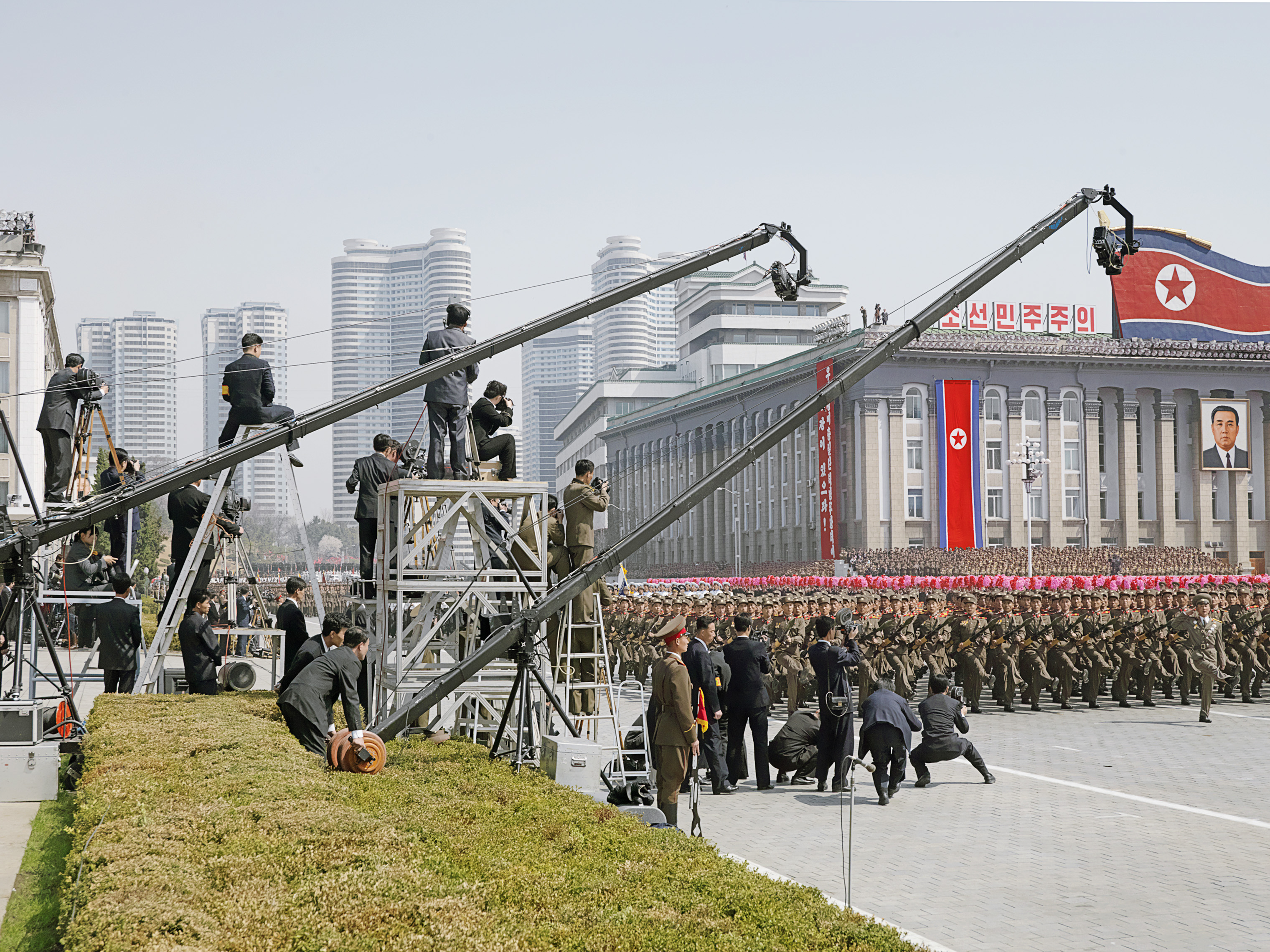In headlines, North Korea exists mainly as a menace, an endless string of military parades, missile tests and nuclear threats. In pictures from space, it’s far less: With limited power supply, after dark the country vanishes into a black space between China and South Korea.
But as President Donald Trump prepares for historic talks with North Korean leader Kim Jong Un, understanding the nuclear-armed Hermit Kingdom has never been more crucial. In order to better grasp the world’s most secretive state, TIME asked 11 photographers with extensive experience traveling in the impoverished nation of 25 million to pick a photograph from their archives and discuss its backstory.
Accompanied by minders at all times, and never knowing when their cameras might be inspected, these photographers attempted to peel back the stagecraft that shrouds the Hermit Kingdom, whether documenting the lavish spectacles or interpreting its collectivized society with an artful eye. Here, lightly edited, are their responses.
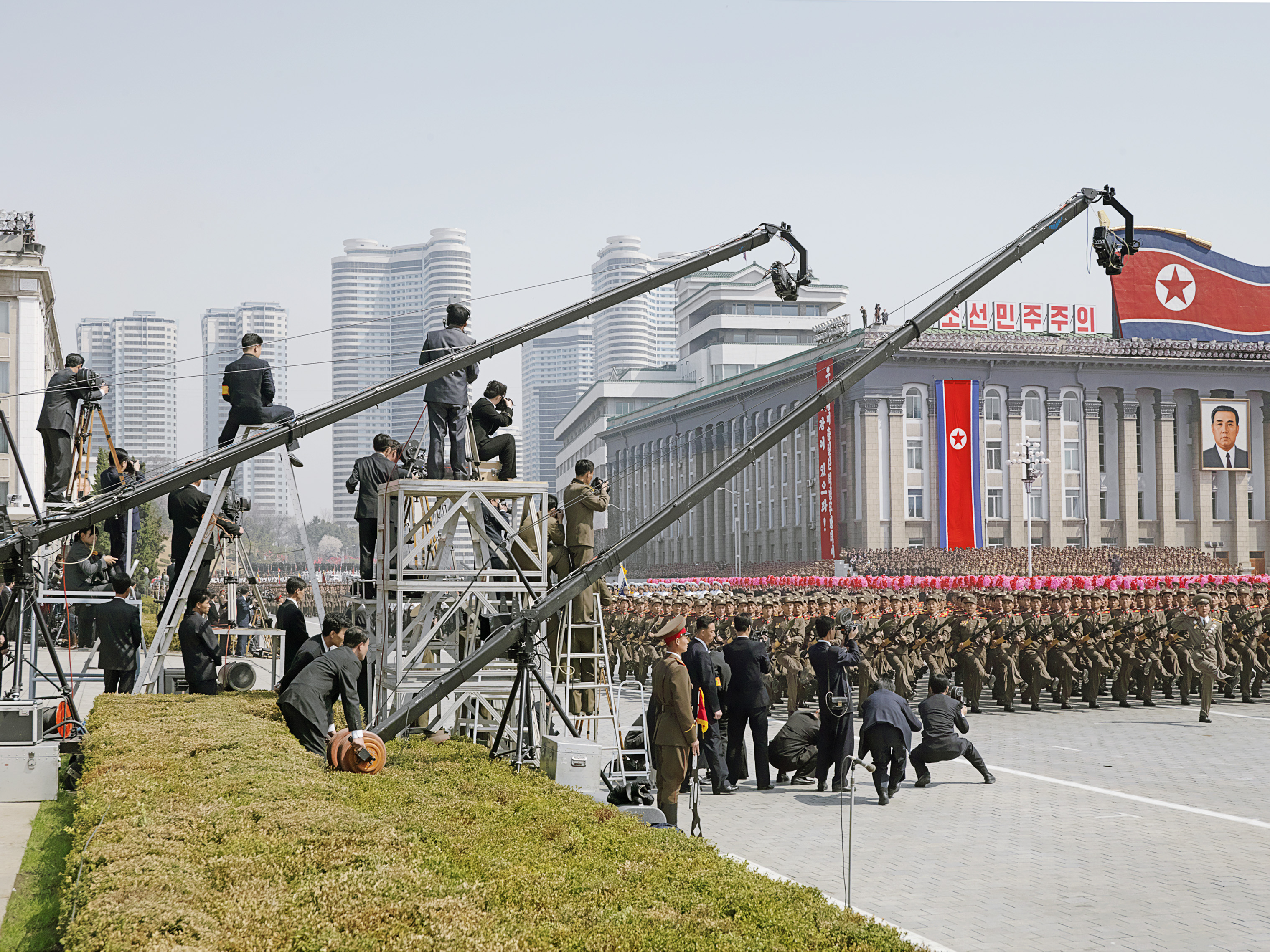
Philippe Chancel | I made this photograph on April 15, 2012, in Kim Il Sung Square during the parade celebrating 100 years since the birth of the Great Leader of the dynasty, Kim Il Sung. This anniversary date is the “Day of the Sun.” I particularly like this “Hollywood” image because it shows exemplarity and strength, which I believe are two essential criteria in my documentary approach. This decisive choice shows this off-field North Korean propaganda in its “apart” clothes, symbolizing the image of a regime whose authority is the the keystone of the building.
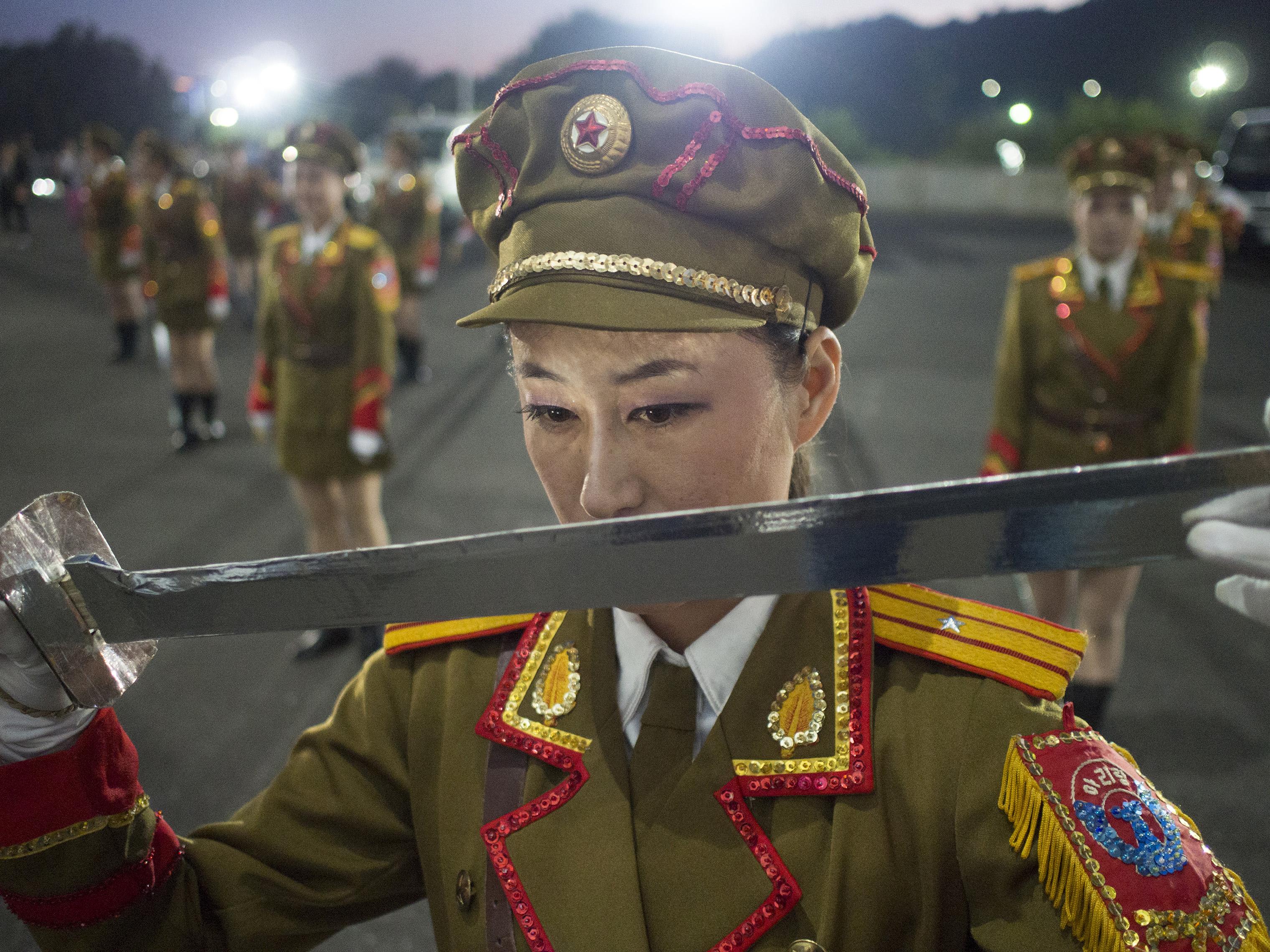
Nick Danziger | It’s unusual to get access to North Korea but that’s only half the battle. Every day, it was a struggle to be allowed to photograph ordinary people and speak to them. I met Ri Hyang Yon, 21, a dancer in the Arirang Games, one of the most extraordinary phenomena of North Korea, during a practice session in the car park of the May Day Stadium in Pyongyang, the world’s largest stadium. No observers are allowed backstage, so as to keep the show’s workings a secret. Ri Hyang Yon and her troupe were ordered into the parking lot and told to perform for cameras. But for me this image distills so much of North Korea as its people live in a kind of national theater, cast in the role of players and audience alike, as well as those of choreographers, prompters and stage managers.
Like many North Koreans I met, they are curious about the outside world. Ri Hyang Yon told me she wants to learn foreign dance steps, but as the internet is not accessible to North Koreans she has had to make do with government-approved films. “I’ll go anywhere for the chance to create dances,” she said before rejoining the 80,000 other entertainers, dancers and ever-smiling gymnasts inside the stadium.
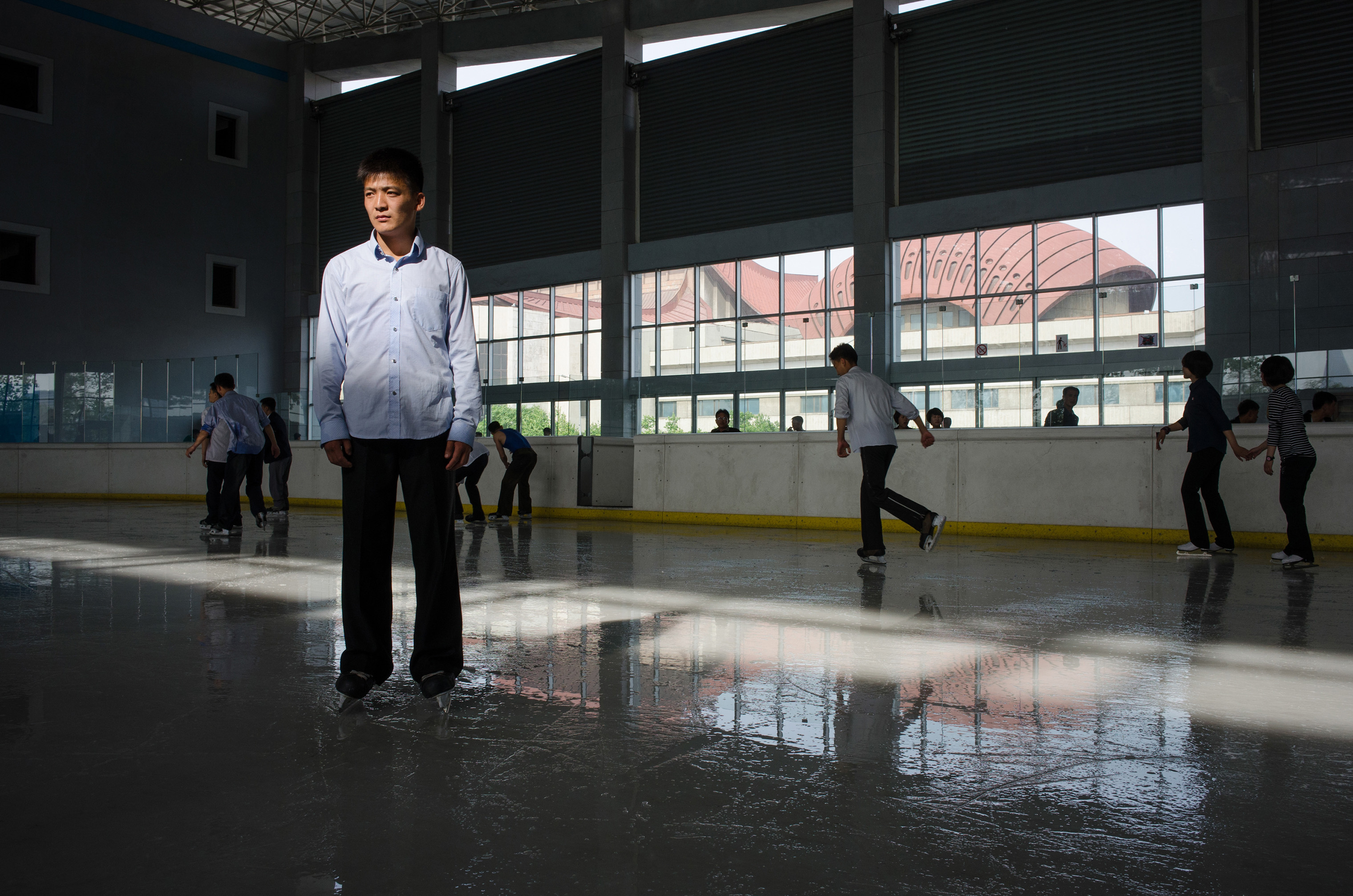
Matjaž Tančič | Some of the best portraits happened by complete accident. One day on an outdoor ice rink in 2014, I really wanted to photograph a completely hipster-looking ice skater wearing a white undershirt tucked into his oversized pants. When I wanted to photograph him, he was instructed to put on his jacket to be more “representative.” This intervention not only destroyed the spontaneity but also the style, so I decided to photograph someone that was not altered.
There was this smiling guy circling around us. He looked a bit too normal at first, so I hesitated but didn’t want to leave the place without taking a portrait of an ice skater. I asked him if we can photograph him, and he agreed. While setting up my camera we had a chat; he was Ri Yong Min, a 21-year-old 52kg boxing champion. I discovered that he had just returned from a boxing championship in Kazakhstan, where he won a medal. In the moment when I took the photo the smile had gone away and I got one of the most intimate and moody portraits from the trip.
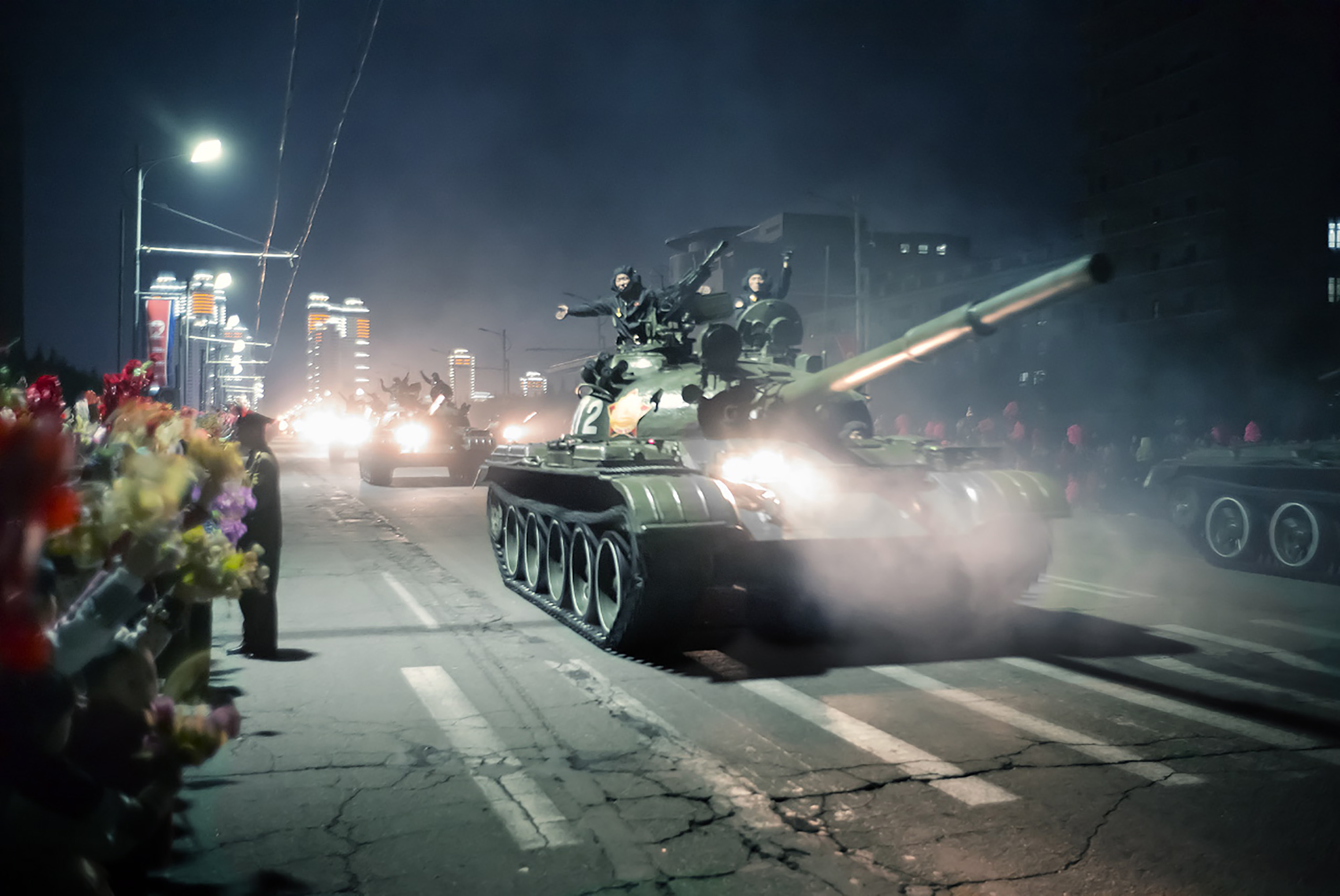
Eddo Hartmann | The Workers’ Party of Korea celebrates the anniversary of its foundation every year in October. This shot was made on a cold late night on Oct. 10, 2015. It was the first and last time my ever-present minders lost me in a crowd. Crossing this dark parade was a haunting experience; a 40-ton tank will never notice it hit you. I had been working on my “Setting The Stage” photography project for a few years but this was one of the key moments I felt transported back in a time when the Cold War swept through the whole world.
Armed with a tripod, I followed my guides in and around Pyongyang, eager to document the monumentality of this city and curious to peek beyond its façade. I encountered the capital as a grand stage, an imposing, often bleak façade that weighs down and dwarfs individuals. Leave it up to the guides and Pyongyang is a deserted city. Their focus is on the grand narrative of country, leader and revolution, and how these are one and undivided. Every story, every visit begins and ends with the Great Leaders, absorbing all attention like a black hole consuming all light.
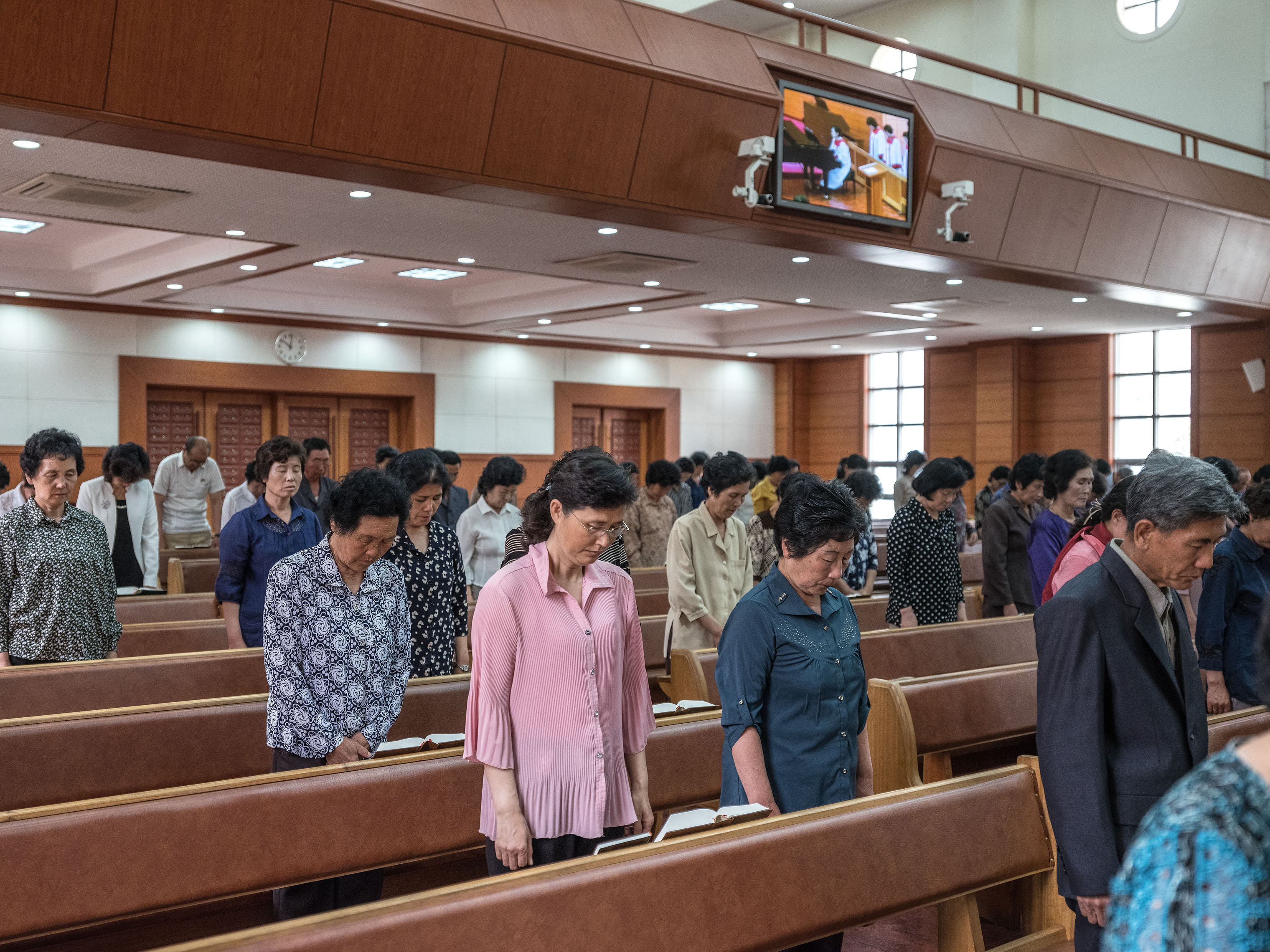
Carl De Keyzer | European, American and Canadian missionaries introduced Protestant Christianity to Korea in the 19th century, where it took root, especially in the northern half of the peninsula. Prior to 1945, Pyongyang had the second-largest Christian population of any city in East Asia, after only Manila. Many of today’s Christians are the descendants of prominent merchant and intellectual families who were involved in nationalist activities against Japanese rule during the colonial period, and, for this reason, are allowed to continue their family traditions in the predominately atheist DPRK.
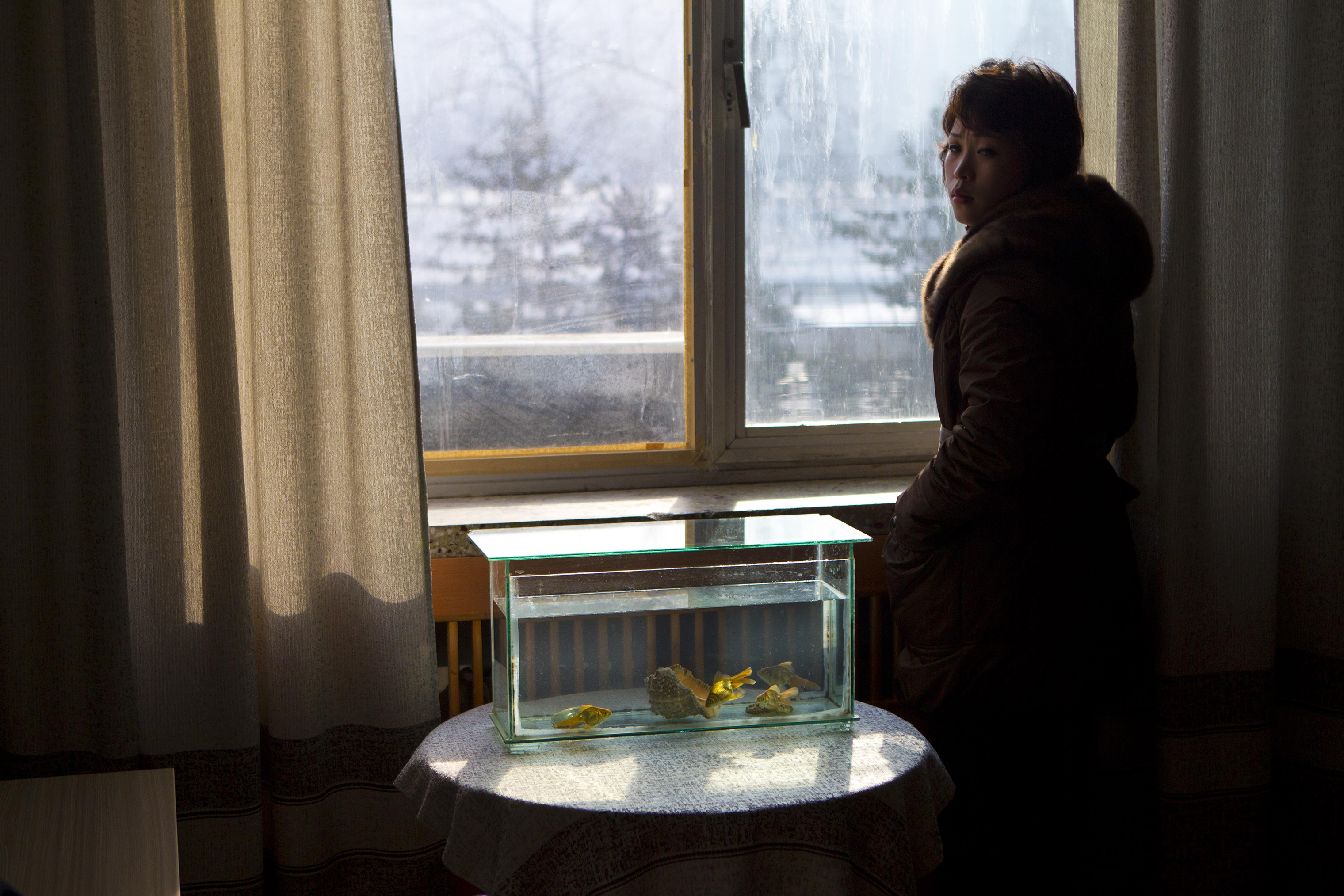
David Guttenfelder | She was wearing a fur-collared coat, standing at an opaque office window to stare at Pyongyang’s cold winter weather outside. Light fell on a tank of goldfish swimming around a seashell.
Most of us know very little about North Korea and its people. Part of the reason we know so little is that relatively few photographs have ever been made inside the otherwise-isolated country.
During my travels to North Korea, now nearly 50 times over the past 17 years, I’ve tried to photograph everything I could see around me. Important news, mass propaganda spectacles, the country’s leaders, the ordinary daily lives of people, ephemera, historical sites, landscapes and architecture, even my uneasy personal life there. Every photograph was one piece of a complicated, sometimes surreal or melancholy puzzle.
The most important photographs I made were of simple fleeting moments inside North Korean people’s offices or homes. These were rare chances to look into one another’s eyes. Despite all of the geopolitical tensions and hostilities, there are real people with real lives worthy of our understanding.
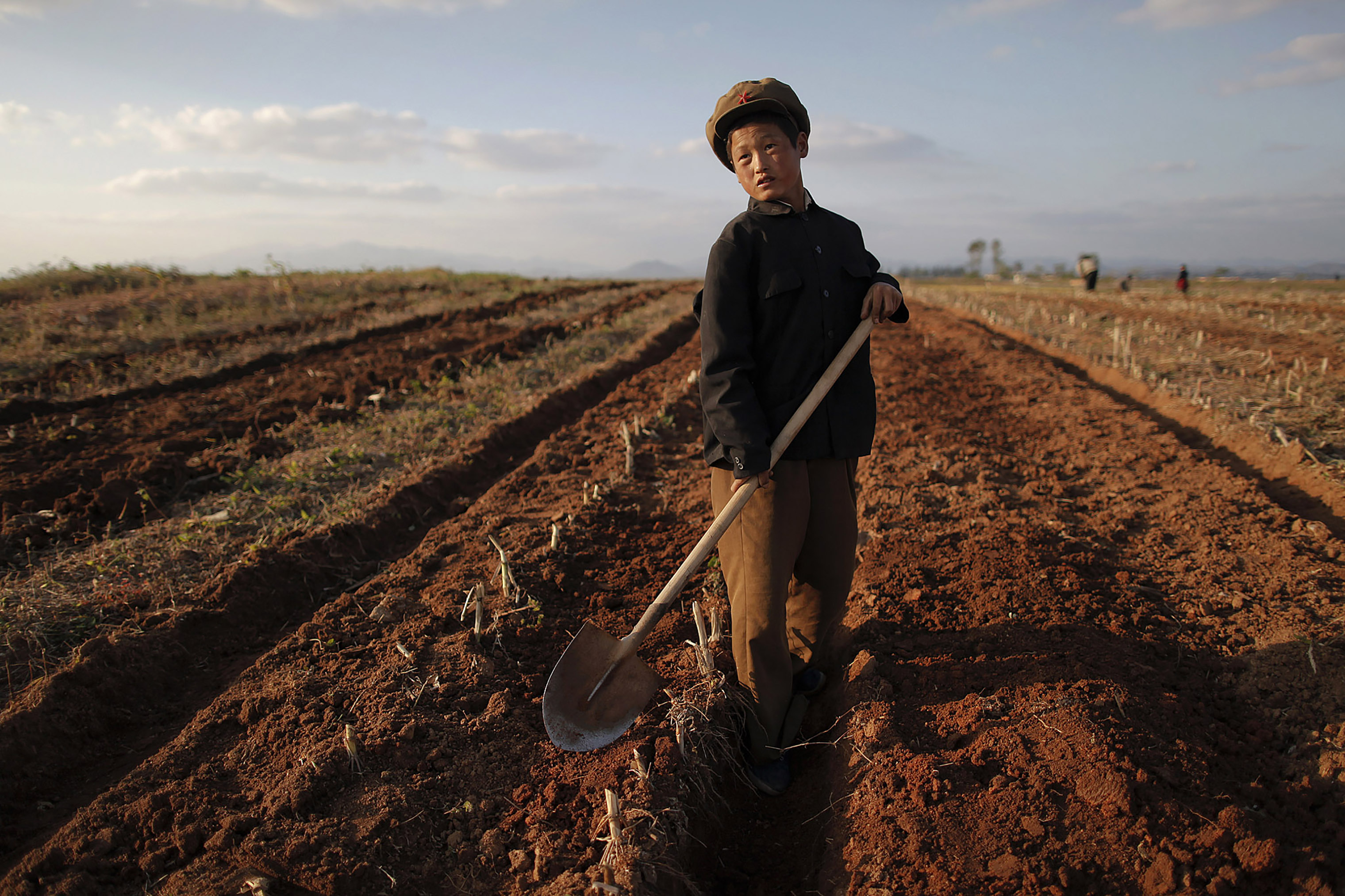
Damir Sagolj | We were driving on a potholed road after a long day of visits to collective farms and everyone was tired but relaxed. Through a window just before the sunset that day, Sept. 30, 2011, I saw a group of people working in the field and, without thinking much, asked for the bus to stop so I can go and take pictures of them. To my great surprise, our minders had no problems with it. Naturally, I ran as quickly as I could before they changed their mind and soon I was among the farmers, an alien with cameras in the middle of their field in South Hwanghae Province, in western North Korea.
The boy that I spotted from afar looked as if he came from a sepia-colored historical movie celebrating the achievements of communism. And he was beyond cool, perhaps also a little bit surprised and scared when I started taking pictures but he just continued with his work. There was nothing around to suggest we are in the 21st century—no tractors, no machinery. Nothing apart from farmers with spades, a beautiful boy with a red star on his hat and me. To make it even better and more unusual, our government escort gave me all the time in the world and didn’t interfere at all. After taking pictures, I had a cigarette and walked back to the bus.
I later traveled to North Korea to report on big events that the country usually invites foreign media for—carefully organized mass spectacles, or kindergartens, fish farms and flower exhibitions featuring models of rockets and proofs of eternal love to country’s leaders. But I would never have it again, such a quiet and beautiful and almost intimate moment stolen from the regime’s omnipresent choreography. It remains one of the pictures from North Korea I see when I close my eyes.
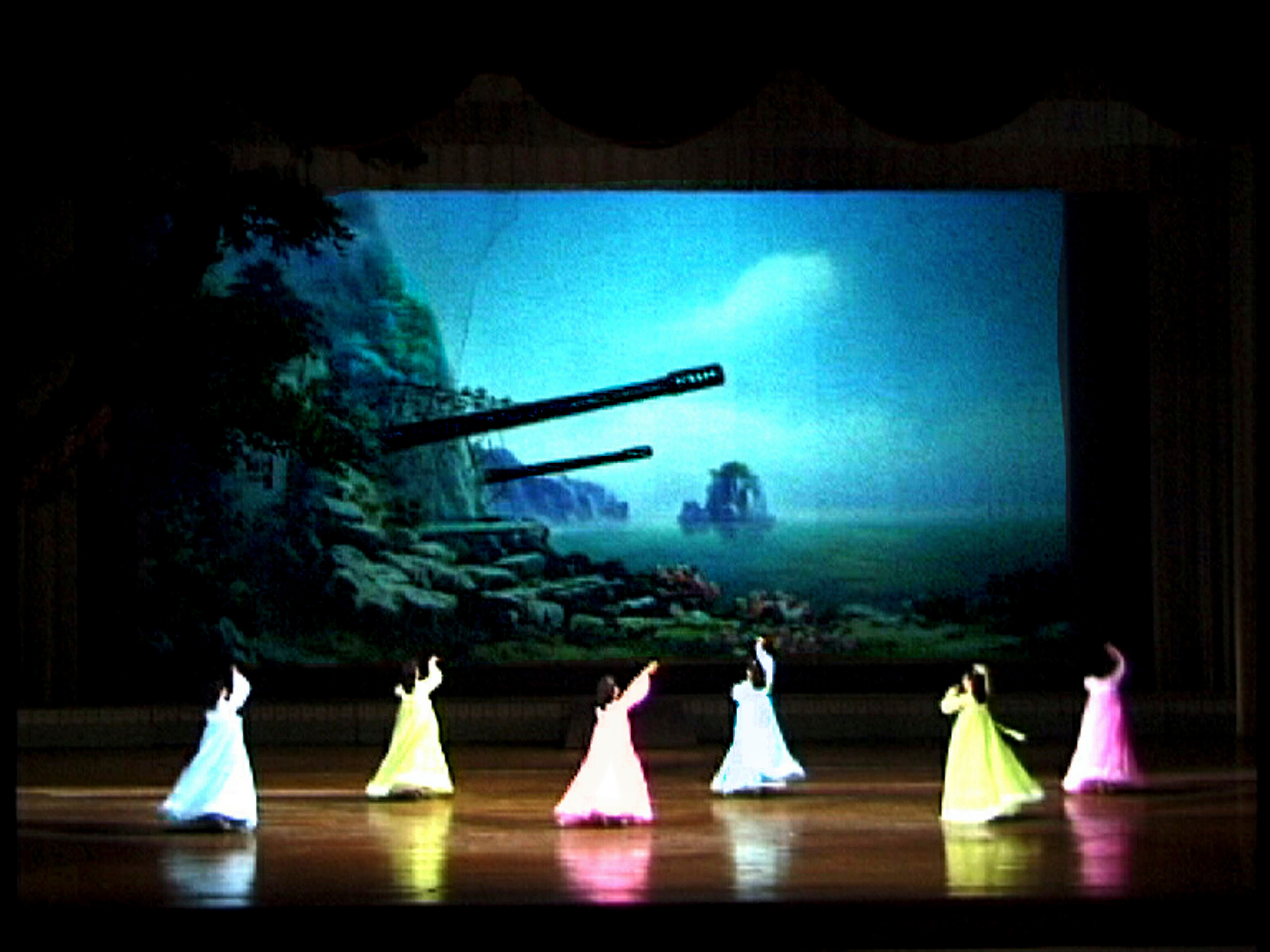
Nicolas Righetti | Through this scene of propaganda theater at Youth Central Hall in Pyongyang in 2000, North Korea shows that the country exists in a vacuum, cut off from the rest of the world. The atmosphere feels like that of a besieged citadel; the guns pointed again the “U.S. Imperials.” I made four trips to North Korea, each with the same official and each with exactly the same hour-by-hour itinerary as the previous visit. I shot everything on video, using the pixellation to heighten the air of unreality.
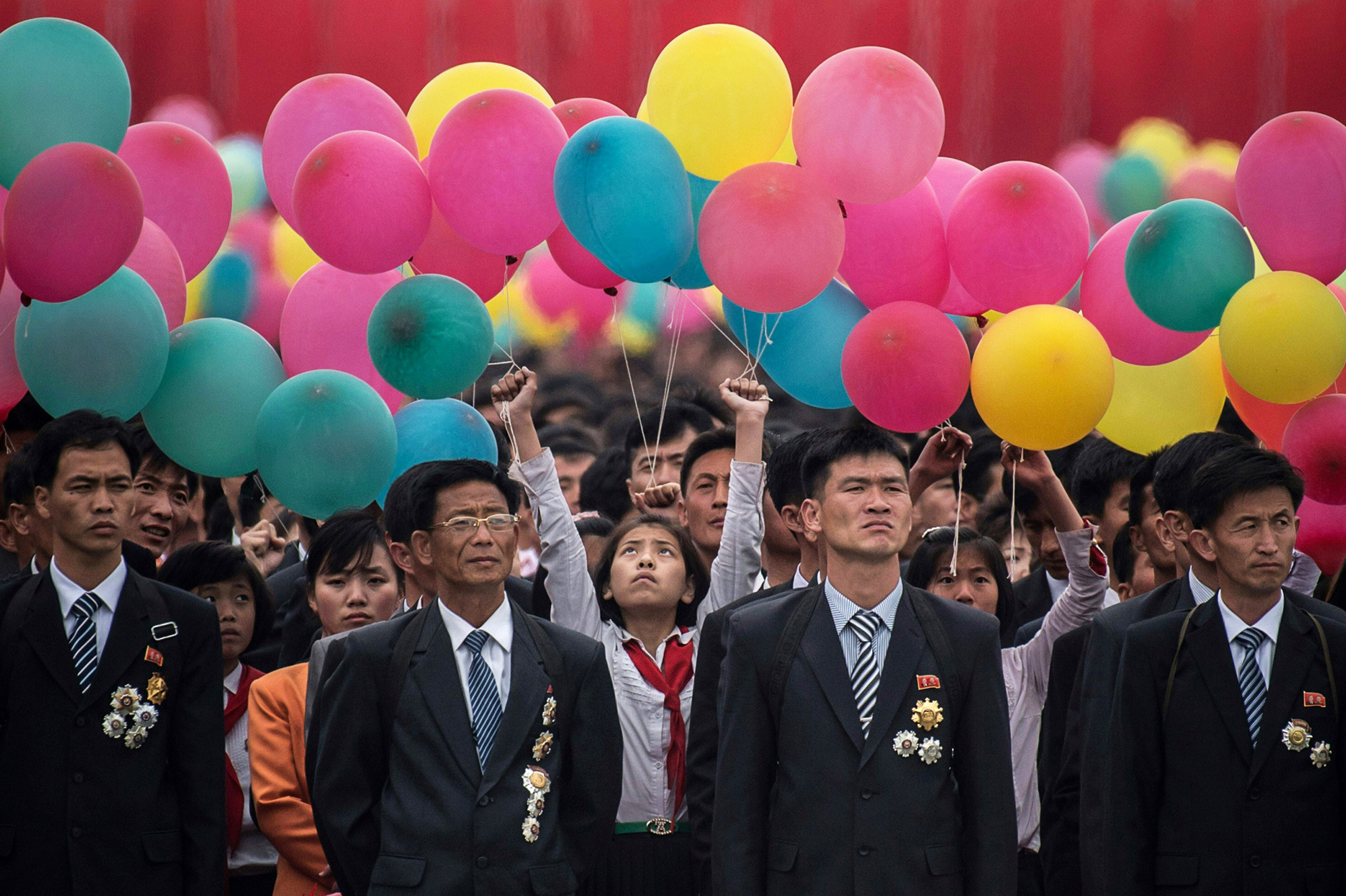
Ed Jones | The people in this photo had gathered for a mass parade marking the end of the seventh Worker’s Party Congress in Pyongyang in May 2016. The image doesn’t show it, but there are thousands of people in front of me, which I find somewhat incapacitating because each of them represents a possibility to show something more than the spectacle as a whole, and I don’t know where to start looking.
The crowd is stationary, waiting for the start of the parade. I can see the balloons but I can’t see who is holding them because they are obscured by the three rows of men before them—that is, until I see this girl with her arms outstretched, her gaze for a second fixated on the balloons above her as everyone else looks ahead.
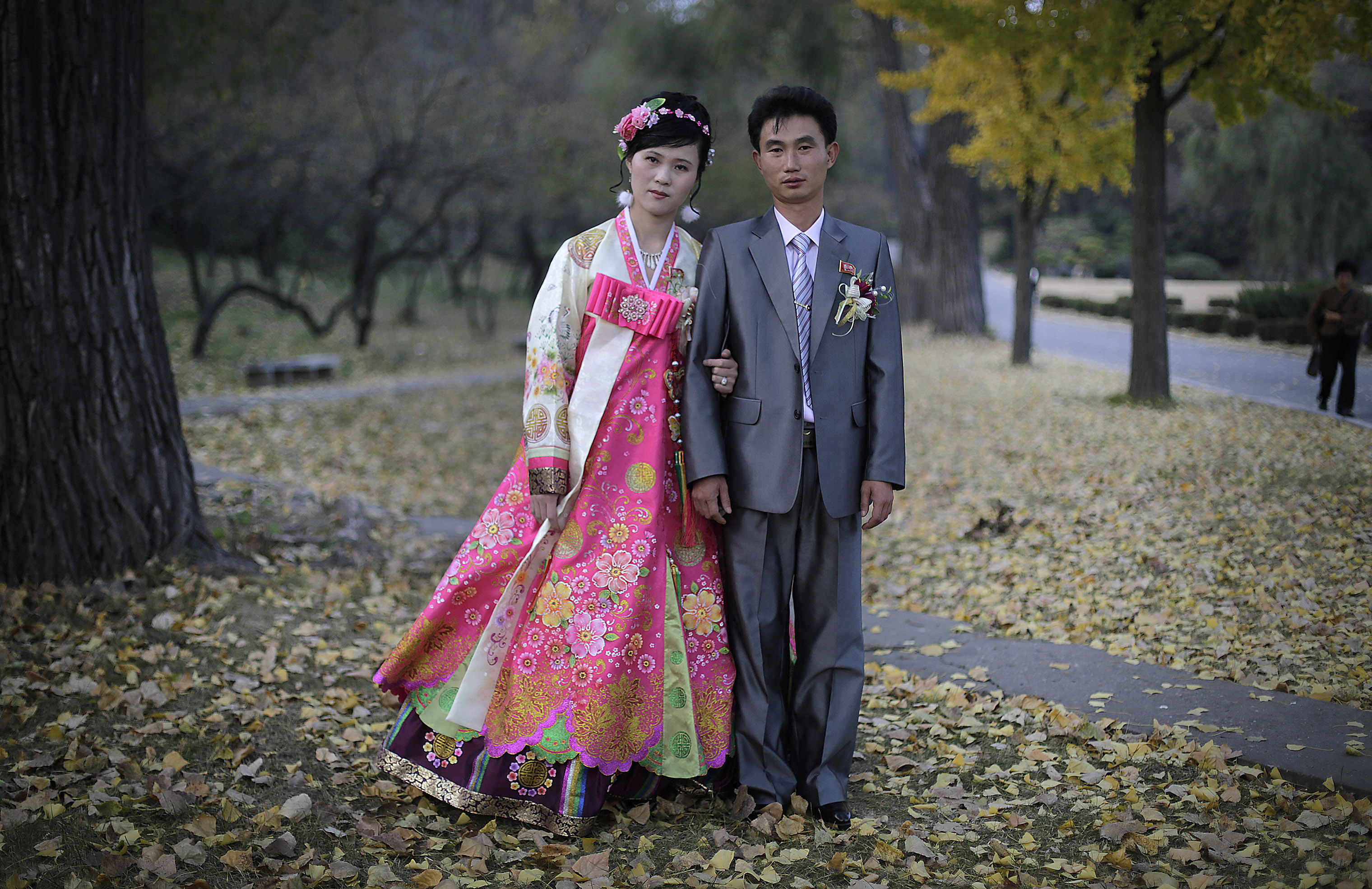
Wong Maye-E | I was taking a walk in Moranbong Park on Oct. 25, 2014, when I saw this couple having their wedding photos taken by their group of friends. I started off shooting candid moments from afar as they posed for photos and worked my way towards them slowly so that I could judge the situation better of whether I was intruding their private moment, and how receptive they were towards me, a foreigner with a camera pointed in their direction. I got closer and by this time, they had already noticed me but didn’t seem to shy away or express any displeasure. When they got close enough, I shouted at them “Chukka Hamnida!” which means “Congratulations” in North Korean. I think that helped break the ice a little.
They looked at me reserved; the bride smiled, the groom nodded. It was then that I asked my guide to check if it was OK that I take a portrait of them. They agreed. Without direction from me, they stopped and posed. I used my Instax camera to take two shots, one for me and one for them. And then I took this photo with my SLR camera. When I was done, I handed one of the instant pictures to them. The bride didn’t seem overly excited but you could tell she was pleasantly surprised.
It was then that I could start a short conversation with them and ask them some simple questions and details on their courtship and plans for the future as a married couple. Many people have commented that the wedding couple didn’t look too happy on their wedding day in this photo, but having interacted with them a little and through my frequent trips into North Korea, I know that they weren’t unhappy. There was a certain dignity in the way they carried themselves and posed and there was also a certain formality that came through in this photo when interacting with me.
This is quite a consistent theme in the series of portraits that I made of different North Koreans. And as a photojournalist who has the opportunity to travel to North Korea often, I want to be able to show a layer beyond what we normally see of that country. It takes time but with better understanding of the people and culture, hopefully I can start to peel off the layers slowly.
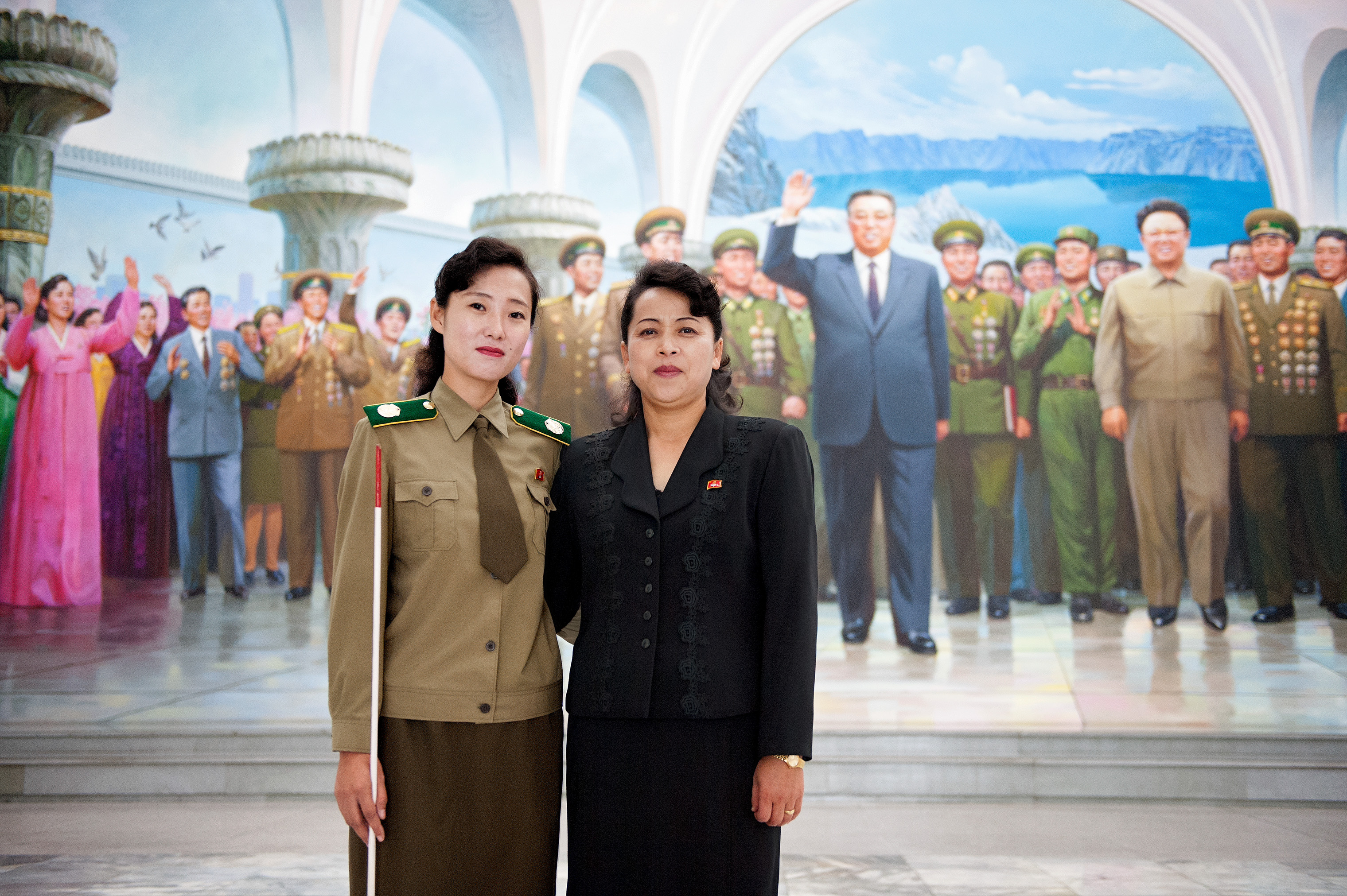
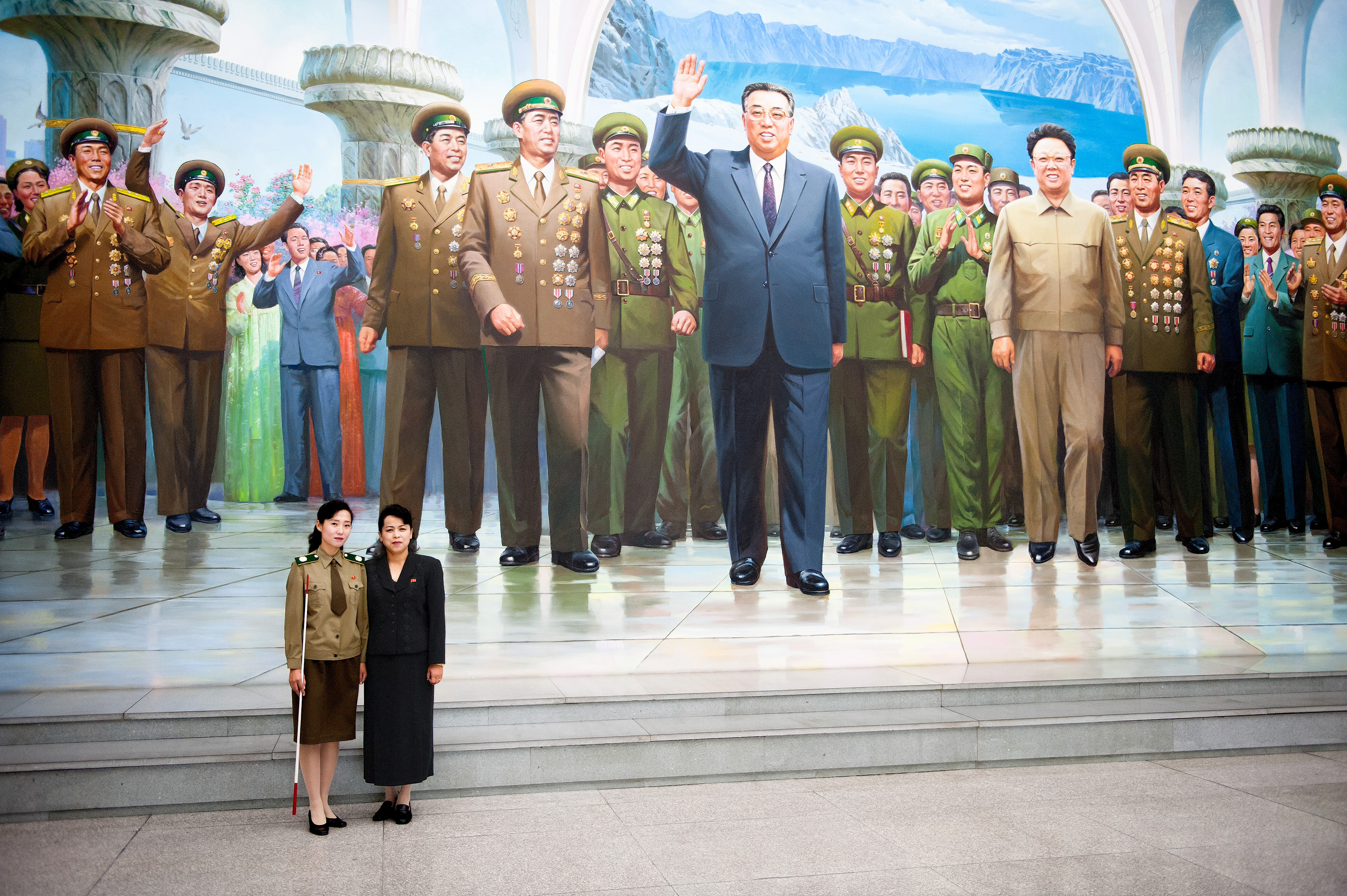
Werner Kranwetvogel | Tourism in North Korea is only possible within the bounds of guided tours, where tourists are kept separate from locals and their everyday lives. This strict separation goes so far that even the employees in the hotels are not local, but in fact Chinese citizens.
I was constantly looking for an authentic experience. Although I was an “individual traveller,” I was allocated two personal guides and a driver who accompanied me everywhere. At each monument or museum, local guides take over and show you around. But whenever possible I tried to break out of this carefully controlled bubble and capture little glimpses of the reality of everyday North Korean life. And you find those glimpses where you least expect them.
After visiting the metro museum in Pyongyang, I wanted to do a portrait of the local guides in front of the magnificent painting in the entrance. I was very keen that the guides didn’t overlap with “eternal president” Kim Il Sung or his son and framed the shot in the classic way of North Korean social realism, so that Kim Il Sung’s head was a bit higher than theirs. However, when the guides saw my picture, they were shocked. They insisted that I take a second one. This time around they took great care to place themselves in the frame in relation to the “Great Leader.” When I showed them this second picture, they were very satisfied with the outcome. Two small workers in the service of the friendly super-father.
- Where Trump 2.0 Will Differ From 1.0
- How Elon Musk Became a Kingmaker
- The Power—And Limits—of Peer Support
- The 100 Must-Read Books of 2024
- Column: If Optimism Feels Ridiculous Now, Try Hope
- The Future of Climate Action Is Trade Policy
- FX’s Say Nothing Is the Must-Watch Political Thriller of 2024
- Merle Bombardieri Is Helping People Make the Baby Decision
